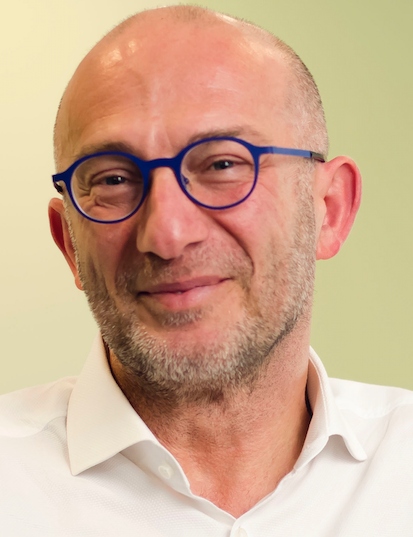Co-Located Conference Agendas3D-Printing and Biofabrication 2020 | Innovations in Microfluidics 2020 | 

Monday, 17 August 202008:00 | Conference Registration, Materials Pick-Up, Morning Coffee and Pastries | |
Session Title: Innovations in Microfluidics, 3D-Bioprinting and BioFab 2020 |
| | 09:30 |  | Keynote Presentation Drop-based Microfluidics For Single-Cell Analysis
David Weitz, Professor, Harvard University, United States of America
This talk will describe the use of microfluidic technology to control and manipulate drops whose volume is about one picoliter. These can serve as reaction vessels for biological assays. These drops can be manipulated with very high precision using an inert carrier oil to control the fluidics, ensuring the samples never contact the walls of the fluidic channels. Small quantities of other reagents can be injected with a high degree of control. The drops can also encapsulate cells, enabling cell-based assays to be carried out. The use of these devices for cell analysis will be described.
|
| 10:00 |  | Keynote Presentation Emergent Engineering of Human Neurological Disease Models
Roger Kamm, Cecil and Ida Green Distinguished Professor of Biological and Mechanical Engineering, Massachusetts Institute of Technology (MIT), United States of America
Microphysiological models have now been developed for a variety of single organs, as well as multi-organ systems. These models are also beginning to find useful applications in the pharmaceutical and biotech industry as disease models and for intermediate throughput drug screening. The current models range from those that are generated by precisely seeding in a device populations of fully differentiated or primary cells that then assemble into functional monolayers or simple 3D structures on one extreme, to ones that are fully emergent, forming by self-assembly often within a single cluster of pluripotent cells on the other. We refer to these two approaches as ‘top-down engineering’ and ‘emergent engineering’. In this presentation, the full range of techniques will be discussed, with examples derived from applications in the context of neurological function and disease. |
| 10:30 | Morning Coffee Break and Networking in the Exhibit Hall | 11:30 |  | Keynote Presentation Engineering Printable 3D Vascularized Tissue Constructs
Shulamit Levenberg, Professor and Dean, Faculty of Biomedical Engineering, Technion Israel Institute of Technology, Israel
Living tissues require a vascular network to supply nutrients and gases and remove cellular waste. Fabricating vascularized constructs represents a key challenge in tissue engineering. Several methods have been proposed to create in vitro pre-vascularized tissues, including co-culturing of endothelial cells, support cells and cells specific to the tissue of interest. This approach supports formation of endothelial vessels and promotes endothelial and tissue-specific cell interactions. In addition, we have shown that in vitro pre-vascularization of engineered tissue can promote its survival and perfusion upon implantation. Implanted vascular networks, can anastomose with host vasculature and form functional blood vessels in vivo. Sufficient vascularization in engineered tissues can be achieved through coordinated application of improved biomaterial systems with proper cell types. We have shown that vessel network maturity levels and morphology are highly regulated by matrix composition. We also explored the effect of mechanical forces on vessels organization and analyzed the vasculogenic dynamics within the constructs. We demonstrated that morphogenesis of 3D vascular networks is highly regulated by tensile forces. Creating complex vascular networks with varying vessel sizes is the next challenge in engineering vascularized tissue constructs. 3D bioprinting, the controlled and automatized deposition of biomaterials and cells, represents a very attractive approach to solve this issue. This technique allows for combining different bioinks (biocompatible printable materials) in an organized fashion to attain native-tissue mimicking structures. |
| 12:00 |  | Keynote Presentation “More is More”: Precision Microfluidics of Large Volumes
Mehmet Toner, Helen Andrus Benedict Professor of Biomedical Engineering, Massachusetts General Hospital (MGH), Harvard Medical School, and Harvard-MIT Division of Health Sciences and Technology, United States of America
Microfluidics gained prominence with the application of microelectromechanical systems (MEMS) to biology in an attempt to benefit from the miniaturization of devices for handling of minute samples of fluids under precisely controlled conditions. Microfluidics exploits the differences between micro- and macro-scale flows, for example, the absence of turbulence, electro-osmotic flow, surface and interfacial effects, capillary forces in order to develop scaled-down biochemical analytical processes. The field also takes advantage of MEMS and silicon micromachining by integrating micro-sensors, micro-valves, and micro-pumps as well as physical, electrical, and optical detection schemes into microfluidics to develop the so-called “micro-total analysis systems (µTAS)” or “lab-on-a-chip” devices. However, the ability to process ‘real world-sized’ volumes efficiently has been a major challenge since the beginning of the field of microfluidics. This begs the question whether it is possible to take advantage of microfluidic precision without the limitation on throughput required for large-volume processing? The challenge is further compounded by the fact that physiological fluids are non-Newtonian, heterogeneous, and contain viscoelastic living cells that continuously responds to the smallest changes in their microenvironment. Our efforts towards moving the field of microfluidics to process large-volumes of fluids was counterintuitive and not anticipated by the conventional wisdom at the inception of the field. We metaphorically called this “hooking garden hose to microfluidic chips.” We are motivated by a broad range of applications enabled by precise manipulation of extremely large-volumes of complex fluids, especially those containing living cells or bioparticles. This presentation will provide a summary of our efforts in bringing microfluidics to large volumes and complex fluids as well as various applications such as the isolation of extremely rare circulating tumor cells from whole blood. The use of high-throughput microfluidics to process large-volumes of complex fluids (e.g., whole blood, bone marrow, bronchoalveolar fluid) has found broad interest in both academia and industry due to its broad range of utility in medical applications. |
| 12:30 |  | Keynote Presentation Interferometric Detection: From Multiplexed Label-free Affinity Measurements to Counting Single Biomolecules
M. Selim Ünlü, Distinguished Professor of Engineering, Department of Electrical and Computer Engineering, Boston University, United States of America
Interferometric reflectance imaging sensor (IRIS) technology is based on interference of light from an optically transparent thin film—the same phenomenon that gives rainbow colors to a soap film when illuminated by white light. IRIS has two modalities: (i) low-magnification (ensemble biomolecular mass measurements) allowing for multiplexed affinity measurements and (ii) high-magnification (digital detection of individual nanoparticles) along with their applications, including label-free detection of multiplexed protein chips, measurement of single nucleotide polymorphism, quantification of transcription factor DNA binding, and high sensitivity digital sensing and characterization of nanoparticles and viruses.
In vitro tests are a cornerstone of clinical practice, with the sensitivity of standard immunoassays measuring protein biomarkers at picomolar concentrations. This level of sensitivity is sufficient for the diagnosis of infectious diseases when clear symptoms are present, however it falls short significantly for the detection of molecular biomarkers that are important in cancer, neurological disorders, and the early stages of infection as well as environmental sensing. Perhaps one of the most exciting recent technological developments in biomarker analysis is single-molecule counting or digital detection, an approach that provides resolution and sensitivity beyond the reach of ensemble measurements. In this presentation, we will cover the technical developments of IRIS platform as well as our efforts in technology commercialization. |
| 13:00 | Lunch | |
Session Title: Trends in Microfluidics -- Research and Applications |
| | |
Session Chair: Albert Folch, University of Washington |
| | 14:00 |  A Novel Microfluidic Mixing Chip A Novel Microfluidic Mixing Chip
L. Scott Stephens, CEO & Founder, Hummingbird Nano, Inc., Professor, University of Kentucky
The interaction of fluids in microfluidic systems is a challenging yet important application. These interactions can take the form of controlled reactions, distribution of particles (slurries), particle control in emulsions and control of concentration, among others. In many of these "mixing" applications, the reagents can be very costly, so it is important to have a system that offers low swept volume and zero dead volume. This presentation will review approaches to the mixing applications and introduce a new chip design low swept volume and zero dead volume. Sample results for the a simple mixing of concentrated dyes will be presented.
| 14:30 |  | Keynote Presentation 3D-Printed PEG-DA Microfluidics: Channels, Valves & Hydrogels
Albert Folch, Professor of Bioengineering, University of Washington, United States of America
The vast majority of microfluidic devices are presently manufactured using micromolding processes that work very well for a reduced set of biocompatible materials, but the time, cost, and design constraints of micromolding hinder the commercialization of many devices. PDMS, in particular, is extremely popular in academic labs, yet the fabrication procedures are based on cumbersome manual methods and the material itself strongly absorbs lipophilic drugs. As a result, the dissemination of many cell-based microfluidic chips – and their impact on society – is in jeopardy. Digital Manufacturing (DM) is a family of computer-centered processes that integrate digital 3D designs, automated (additive or subtractive) fabrication, and device testing in order to increase fabrication efficiency. Importantly, DM enables the inexpensive realization of 3D designs that are impossible or very difficult to mold. The adoption of DM by microfluidic engineers has been slow, likely due to concerns over the resolution of the printers and the biocompatibility of the resins. We have developed microfluidic devices by SL in PEG-DA-based resins with automation and biocompatibility ratings similar to those made with PDMS. The resins allow for building transparent microchannels, microvalves, and multi-material devices containing hydrogels of larger-MW PEG-DA formulations. |
| 15:30 |  | Keynote Presentation Microfluidics For the Isolation of Circulating Biomarkers From Glioblastoma Patients
Shannon Stott, Assistant Professor, Massachusetts General Hospital & Harvard Medical School, United States of America
|
| 16:30 |  | Keynote Presentation Back to the Future: Porting Legacy Assays to Microfluidic Cartridges
Richard Chasen Spero, CEO, Redbud Labs, United States of America
Despite booming investment, the use of microfluidic and sample-to-answer platforms is still dwarfed by traditional molecular tests and immunoassays. Imagine being able to rapidly port this vast back-catalogue of assays to a cartridge-based format. We report on the development of modular microfluidic chips that can readily implement a wide range of legacy assays without degradation in performance, from isothermal amplification to nucleic acid purification. |
| 17:30 | Sensitive Detection of Nitrate using a Paper-based Microfluidic Device
Amer Charbaji, Researcher, University of Rhode Island, United States of America
Hojat Heidari-Bafroui, PhD Student, University of Rhode Island, United States of America
Paper has been used as a platform for biological and chemical applications for over a century. Paper-based microfluidic devices have been gaining popularity over the past several years for the many advantages they provide, most notably their low cost, portability, ease of use and disposability. Paper-based microfluidic devices are made up of different sections that serve different purposes. The simpler devices generally have a sample port, into which the sample fluid is loaded, transport channels, that connect the different sections of the device, reaction zones, at which the sample fluid reacts or mixes with dry or wet reagents, and a detection zone, at which a signal is formed that can be either qualitative in nature or can be measured quantitatively. While a large number of applications have been described and implemented using paper-based microfluidic devices, opportunities for improving their performance still exist due to various advancements in the field of paper-based microfluidics. An example is the performance of a paper-based microfluidic device for the detection of nitrate. A new user friendly and inexpensive paper-based microfluidic device for the detection of nitrate was developed with improvements in the limit of detection and quantification over 40% than what has been previously published. | 18:00 | Close of Day 1 of the Conference |
Tuesday, 18 August 202008:00 | Morning Coffee, Tea and Pastries in the Exhibit Hall | |
Session Title: Applications of Microfluidics in Key Areas |
| | 09:30 |  | Keynote Presentation Microfluidic Devices To Measure NETs In Circulation
Daniel Irimia, Associate Professor, Surgery Department, Massachusetts General Hospital (MGH), Shriners Burns Hospital, and Harvard Medical School, United States of America
|
| 10:30 | Morning Coffee Break and Networking in the Exhibit Hall | 11:15 |  | Keynote Presentation Wound Healing-on-a-Chip: The Long and Painful Road From Lab Prototypes to Industrial Manufacturing Applications
Peter Ertl, Professor of Lab-on-a-Chip Systems, Vienna University of Technology, Austria
All wound healing assays are based on the inherent ability of adherent cells to proliferate and move into adjacent cell-free areas, thus providing information on cell viability, cellular mechanisms and multicellular movements. Despite their wide-spread use for toxicological screening, biomedical research and pharmaceutical studies, to date no satisfactory technological solutions are available that allow for the automated, miniaturized and integrated induction of defined wounds. To bridge this technological gap we have developed (1) a lab-on-a-chip capable of mechanically inducing circular cell-free areas within 2D and 3D cell cultures and (2) a personalized companion diagnostic tool for individualized therapy solutions for chronic wounds. In this presentation both microfluidic systems and their applications for wound healing research as well as device translation and scale up manufacturing issues will be discussed.
|
| 12:15 | Joint-on-a-Chip as Alternative to Animal Models in Arthritis Research
Mario Rothbauer, Researcher, Vienna University of Technology, Austria
With a prevalence of about 1%, rheumatoid arthritis (RA) is the most common chronic inflammatory joint disease, characterized by progressive, intermittent inflammation leading to joint destruction and are among the most frequently diagnosed diseases in aged patients. The talk will cover the development of multiplexed organ-on-a-chips as next-gen in vitro models as disease model resembling onset and progression of inflammatory arthritis. Also, a teasing outlook on its application potential for replacement of animal models and future drug screening efforts will be discussed. | 12:45 | Lunch | |
Session Title: Single Cell Analysis, Single Molecule Analysis and Label-Free Detection |
| | 14:00 | A Systematic Comparison of Single Cell RNA-Seq Methods
Joshua Levin, Senior Group Leader, Research Scientist, Stanley Center for Psychiatric Research, Klarman Cell Observatory, The Broad Institute of MIT and Harvard, United States of America
A multitude of single-cell RNA sequencing methods have been developed in
recent years, with dramatic advances in scale and power, and enabling
major discoveries and large scale cell mapping efforts. We directly
compared seven methods for single cell and/or single nucleus profiling
from three types of samples – cell lines, peripheral blood mononuclear
cells and brain tissue. To analyze these datasets, we developed and
applied scumi, a flexible computational pipeline that can be used for
any scRNA-seq method. We evaluated the methods for both basic
performance and for their ability to recover known biological
information in the samples. | 15:00 | Liquid Biopsy using Nanotube-CTC-Chip
Balaji Panchapakesan, Professor, Department of Mechanical Engineering, Worcester Polytechnic Institute (WPI), United States of America
We report the further development of the nanotube-CTC-chip for isolation of tumor-derived epithelial cells (circulating tumor cells, CTCs) from peripheral blood, with high purity, by exploiting the physical mechanisms of preferential adherence of CTCs on a nanotube surface. The nanotube-CTC-chip is a new 76-element microarray technology that combines carbon nanotube surfaces with microarray batch manufacturing techniques for the capture and isolation of tumor-derived epithelial cells. Using a combination of red blood cell (RBC) lysis and preferential adherence, we demonstrate the capture and enrichment of CTCs with a 5-log reduction of contaminating WBCs. The nanotube-CTC-chip successfully captured CTCs in the peripheral blood of breast cancer patients (stage 1–4) with a range of 4–238 CTCs per 8.5 ml blood or 0.5–28 CTCs per ml. CTCs (based on CK8/18, Her2, EGFR) were successfully identified in breast cancer patients, and no CTCs were captured in healthy controls. CTC enumeration based on multiple markers using the nanotube-CTC-chip enables dynamic views of metastatic progression and could potentially have predictive capabilities for diagnosis and treatment response. | 15:30 |  | Keynote Presentation Single Cells to Single Molecules: Biological Drivers and Practical Challenges
John Nolan, CEO, Cellarcus Biosciences, Inc., United States of America
Quantitative measurement of the molecular components of biological systems is essential to understanding and predicting their behavior. Modern cytometry technologies, including multiparameter flow and image cytometry, have enabled unprecedented views into the organization and function of both liquid organs (eg the immune system) and solid tissues at the single cell level. These technologies have revolutionized our ability to study and manipulate these systems, but have also revealed to need to understand the composition and organization of the sub-cellular molecular assemblies that are responsible for function. Sub-cellular cytometry challenges the sensitivity and resolution of the instruments and assays used to measure these systems, and demands a revised view of how to use instruments, reagents, and standards to produce rigorous and reproducible analysis tools. I will review recent advances in cytometry technologies and their applications to sub-cellular analysis, and use recent studies of cell-derived extracellular vesicles (EVs, aka exosomes and microvesicles) to illustrate new solutions and as yet unmet needs. |
| 17:00 | Development of an Organ-on-a-Chip-Device For Nutrient Transport Measurement Across the Placental Barrier
Babak Mosavati, Researcher, Florida Atlantic University, United States of America
A 3D placental-on-a-chip model is developed to study the nutrient transfer across the maternal-fetal interface in Placental malaria(PM). This model may contribute to better understanding and potentially treatment of PM. | 17:30 | Close of Day 2 of the Conference |
|


 Add to Calendar ▼2020-08-17 00:00:002020-08-18 00:00:00Europe/LondonInnovations in Microfluidics 2020Innovations in Microfluidics 2020 in Boston, USABoston, USASELECTBIOenquiries@selectbiosciences.com
Add to Calendar ▼2020-08-17 00:00:002020-08-18 00:00:00Europe/LondonInnovations in Microfluidics 2020Innovations in Microfluidics 2020 in Boston, USABoston, USASELECTBIOenquiries@selectbiosciences.com